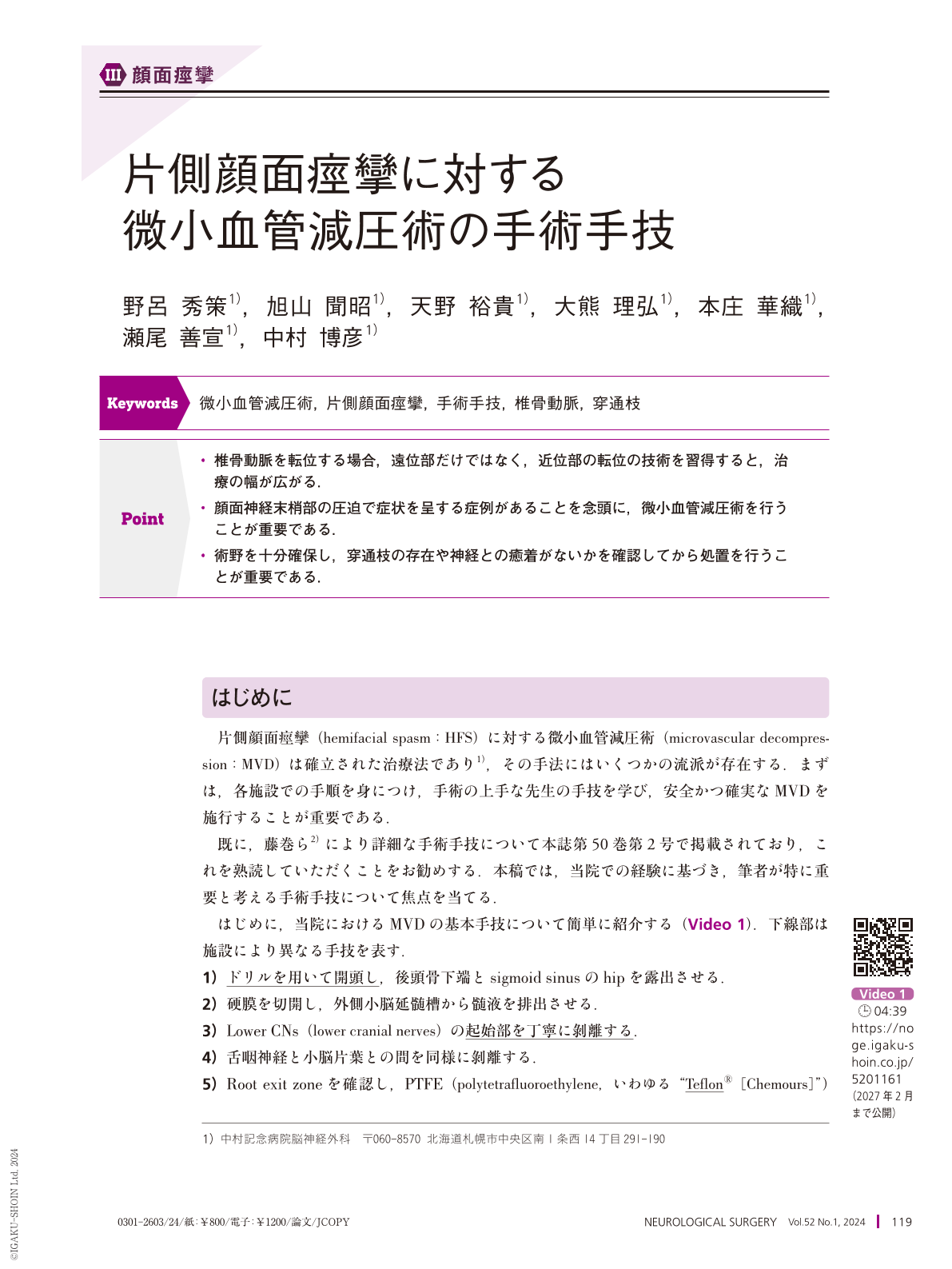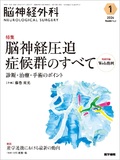Japanese
English
- 有料閲覧
- Abstract 文献概要
- 1ページ目 Look Inside
- 参考文献 Reference
Point
・椎骨動脈を転位する場合,遠位部だけではなく,近位部の転位の技術を習得すると,治療の幅が広がる.
・顔面神経末梢部の圧迫で症状を呈する症例があることを念頭に,微小血管減圧術を行うことが重要である.
・術野を十分確保し,穿通枝の存在や神経との癒着がないかを確認してから処置を行うことが重要である.
*本論文中、[Video]マークのある図につきましては、関連する動画を見ることができます(公開期間:2027年2月まで)。
This study discusses the key microvascular decompression(MVD)techniques for the treatment of hemifacial spasm(HFS). The author's experience is based on their institution's cases, highlighting three critical techniques.
(1)Vertebral artery(VA)repositioning: Repositioning the VA is essential in challenging cases. This article focuses on the relocation of the proximal portion of the VA and the importance of careful dissection.
(2)Relocating vessels compressing the peripheral branches of the facial nerve: HFS can result from nerve compression at various locations, including the cisternal portion. This study addressed cisternal compression and considered the nearby nerves.
(3)Considering the perforating branches during repositioning, cases may involve complex branching of the perforating arteries. This paper describes an approach that carefully repositions the vessels without damaging the perforating branches.
The results from 100 VA-involved cases showed excellent outcomes, with 91.2% of patients experiencing T0(excellent)results. This study emphasized the need to adapt the surgical approach to each unique case to ensure the safety and effectiveness of MVD.
This study provides insights into the critical MVD techniques for HFS, emphasizing the importance of continuous experience and knowledge accumulation. These techniques can be learned by other neurosurgeons, thereby expanding the availability of safe and successful MVD procedures for HFS.

Copyright © 2024, Igaku-Shoin Ltd. All rights reserved.


